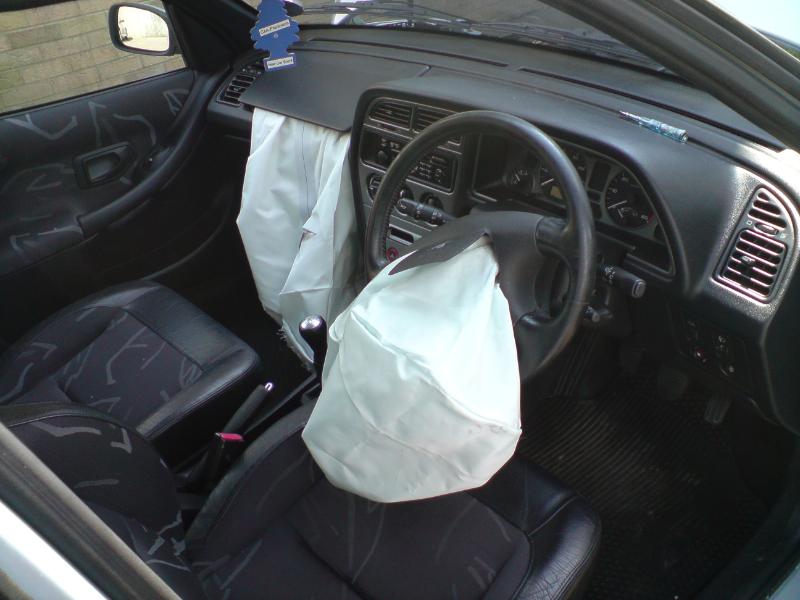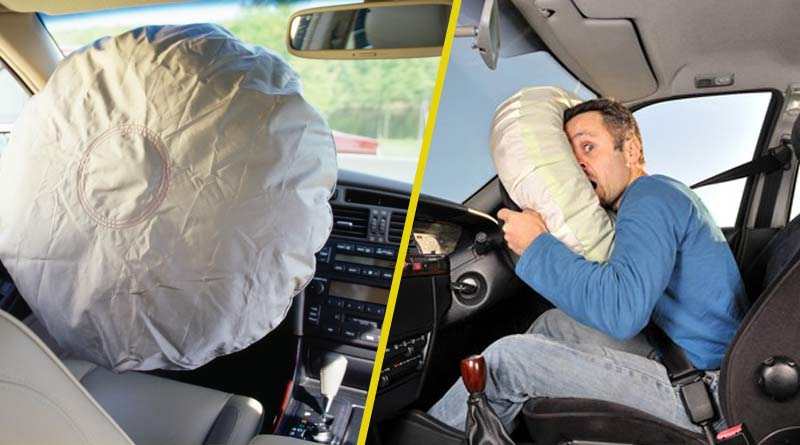In vehicular safety, airbags play a pivotal role during collisions, deploying within milliseconds to protect occupants. When a collision occurs, sensors detect the abrupt deceleration and send signals to the airbag system. In response, the airbags rapidly inflate, creating a cushioning barrier between the occupants and the vehicle’s interior. This swift deployment mitigates the force of impact, reducing the risk of injury. Understanding the mechanics of how airbags deploy underscores their critical function in enhancing passenger safety, illustrating how technology contributes to making modern vehicles safer in the event of accidents.
What are airbags?

“Airbags are crucial safety components in vehicles, designed to deploy rapidly in the event of a collision,” explained Dr. Michael Adams, a vehicle safety expert at SafeDrive Technologies. “Acting as supplemental restraint systems, they enhance passenger safety by inflating within milliseconds upon detecting a sudden deceleration. Equipped with sensors, airbags respond to collision forces, providing a protective cushion between occupants and the vehicle’s interior. This swift deployment mitigates the impact, reducing the risk of injuries. Modern vehicles often feature multiple airbags, strategically positioned to comprehensively safeguard occupants. Integral to a vehicle’s Supplemental Restraint System (SRS), airbags work in tandem with seat belts, underscoring their pivotal role in automotive safety.”
Important Components
- Airbag Module: The core housing for essential components like the airbag, inflator, and sensors.
- Airbag: The inflatable cushion rapidly deployed during a collision, providing protection.
- Inflator: Generates gas (typically nitrogen) for rapid airbag inflation through a controlled explosion.
- Crash Sensors: Strategically placed sensors detecting sudden deceleration and signaling airbag deployment.
- Diagnostic Unit: Monitors system health, conducting regular self-checks for proper functionality.
- Igniter: Initiates controlled explosion within the inflator, leading to airbag inflation.
- Wiring Harness: Connects components, facilitating communication and power distribution.
- Backup Power Source: Secondary power supply ensuring system functionality if the primary source fails.
- Steering Wheel and Dashboard Covers: Covers are designed to tear open easily upon airbag deployment, allowing protection for occupants.
How do Airbags work?

- Sensor Activation: Vehicle sensors, strategically placed throughout the vehicle, detect abrupt deceleration, a sign of a collision.
- Signal Transmission: Upon collision detection, these sensors swiftly send signals to the airbag control module, located within the vehicle.
- Ignition of Propellant: The airbag control module, upon receiving the signals, activates an igniter. This igniter triggers a small explosion of solid propellant within the airbag system.
- Rapid Inflation: The explosion generates nitrogen gas, rapidly inflating the airbag. This inflation occurs within milliseconds, ensuring quick deployment.
- Impact Absorption: The inflated airbag serves as a cushion, absorbing and dispersing the force of the impact. This minimizes the risk of injury to the vehicle’s occupants by preventing direct contact with hard surfaces.
- Deflation: After deployment, the airbag begins to deflate. This rapid deflation is intentional, allowing occupants to exit the vehicle safely and preventing any obstruction to visibility.
- Supplementary Restraint: Airbags complement seat belts as part of the vehicle’s Supplemental Restraint System (SRS). Together, they provide a comprehensive safety net, enhancing protection for occupants in the event of a collision.
How Airbags Deploy During Collisions?
- Collision Detection: Your car’s watchful sensors constantly monitor movement. A sudden slowdown triggers a warning – a potential crash ahead!
- Sensor Activation: The signal instantly sparks the airbag system into action, prepping the airbags for deployment.
- Ignition & Inflation: A tiny controlled explosion ignites a propellant, rapidly inflating the airbag with nitrogen gas in milliseconds.
- Cushioning Impact: The airbag transforms into a life-saving cushion, absorbing the crash force and keeping occupants from hitting hard surfaces.
- Deflation: Once deployed, the airbag quickly deflates, allowing passengers to safely exit the vehicle.
- Working Together: Airbags are part of a team effort! They work in harmony with seat belts within the Supplemental Restraint System (SRS) to provide a comprehensive safety shield.
Airbags stand as silent guardians, deploying rapidly to safeguard lives during collisions. Comprising intricate components working in harmony, they epitomize technological innovation in vehicle safety. These inflatable cushions not only cushion impacts but also symbolize a commitment to mitigating the consequences of accidents, enhancing our journey on the road. For more such posts please visit our Technology section.



